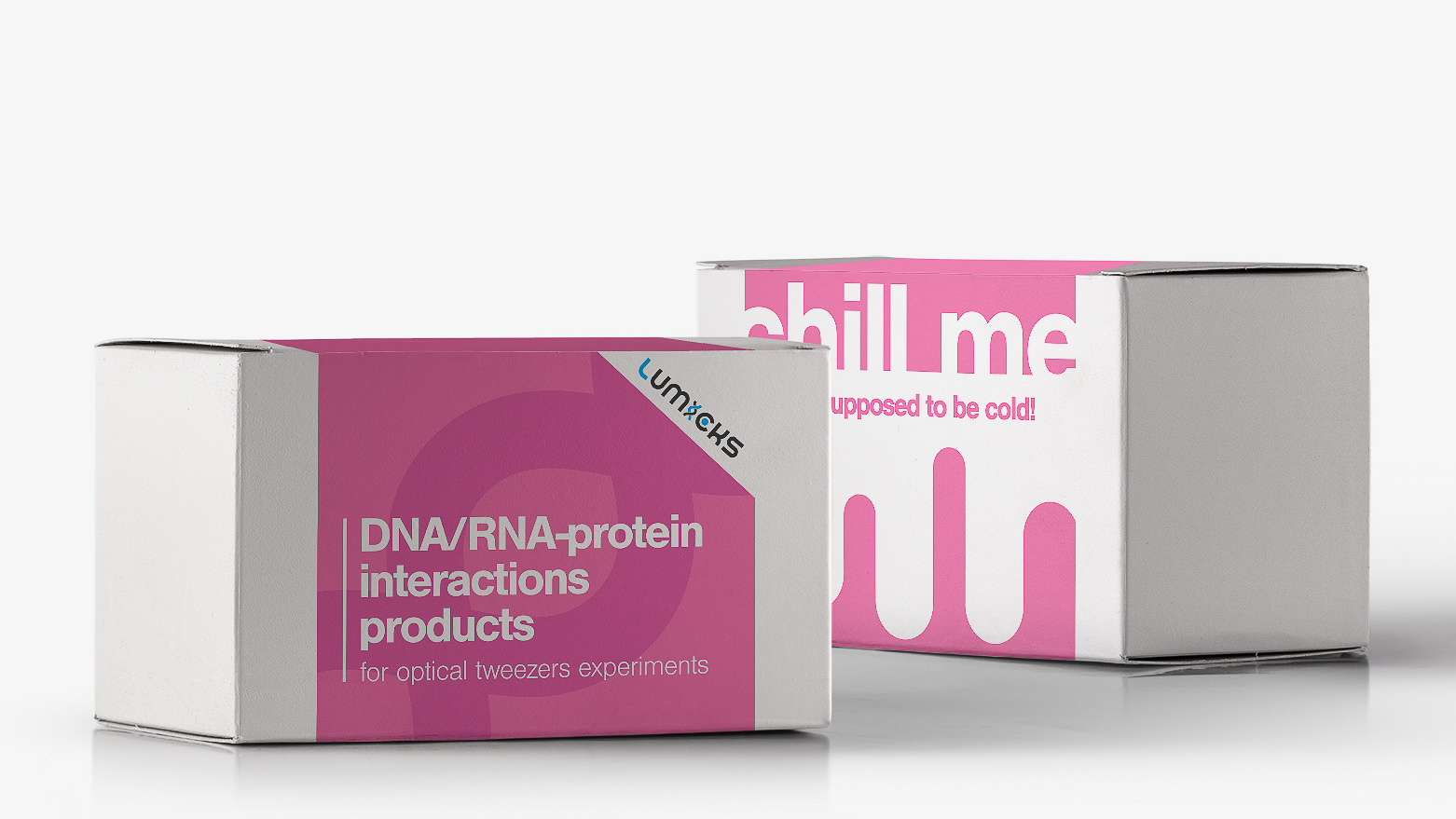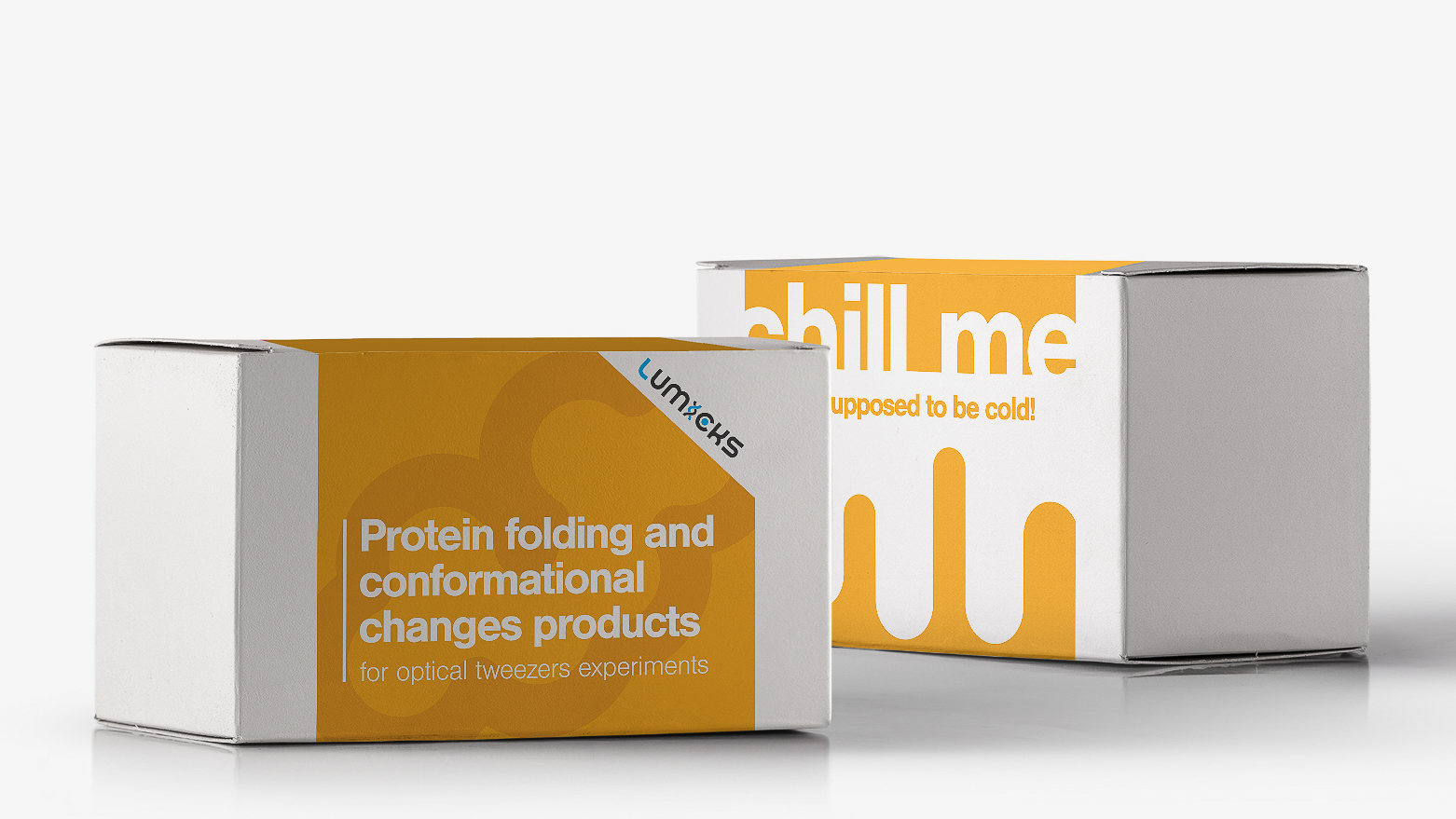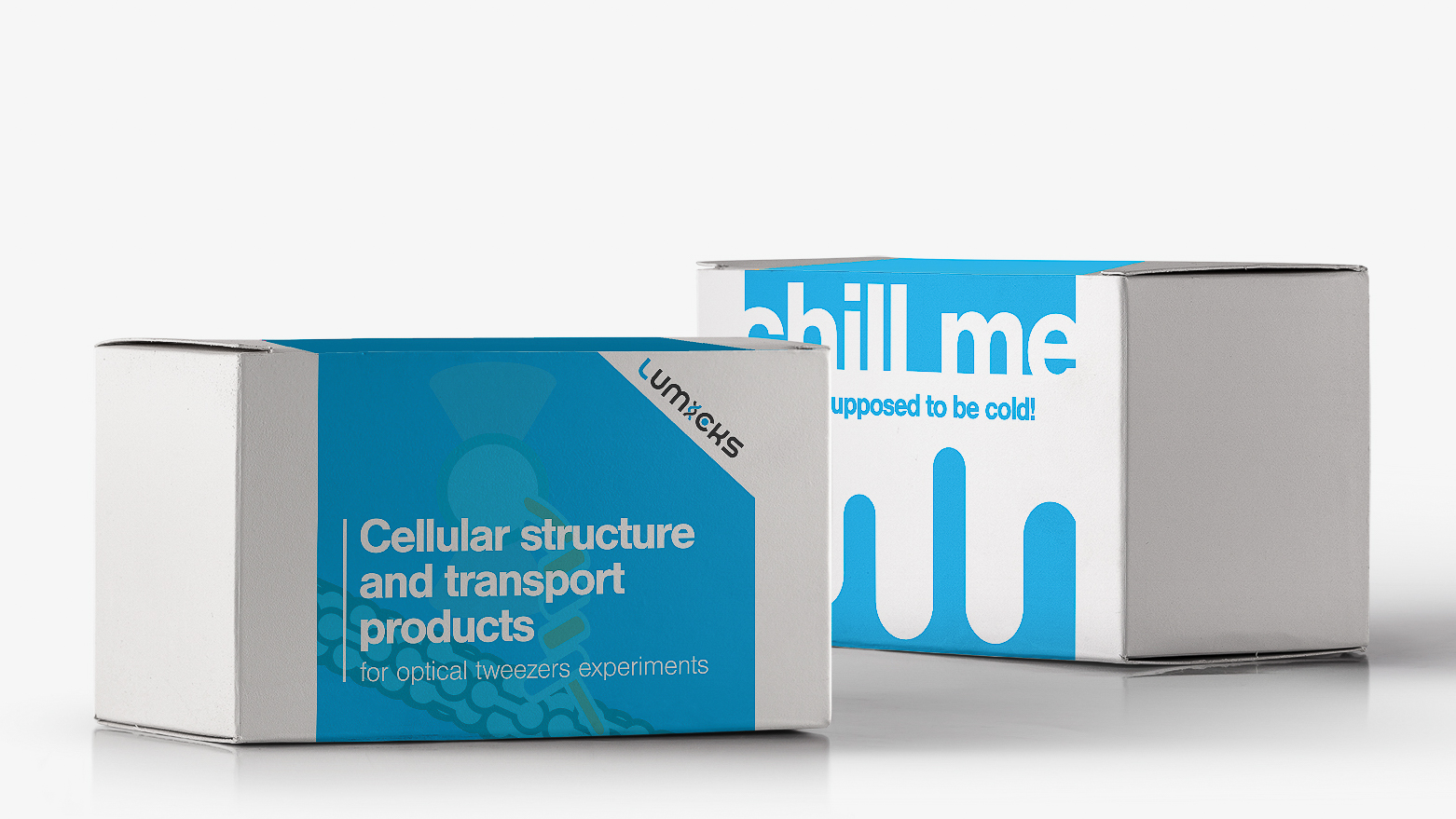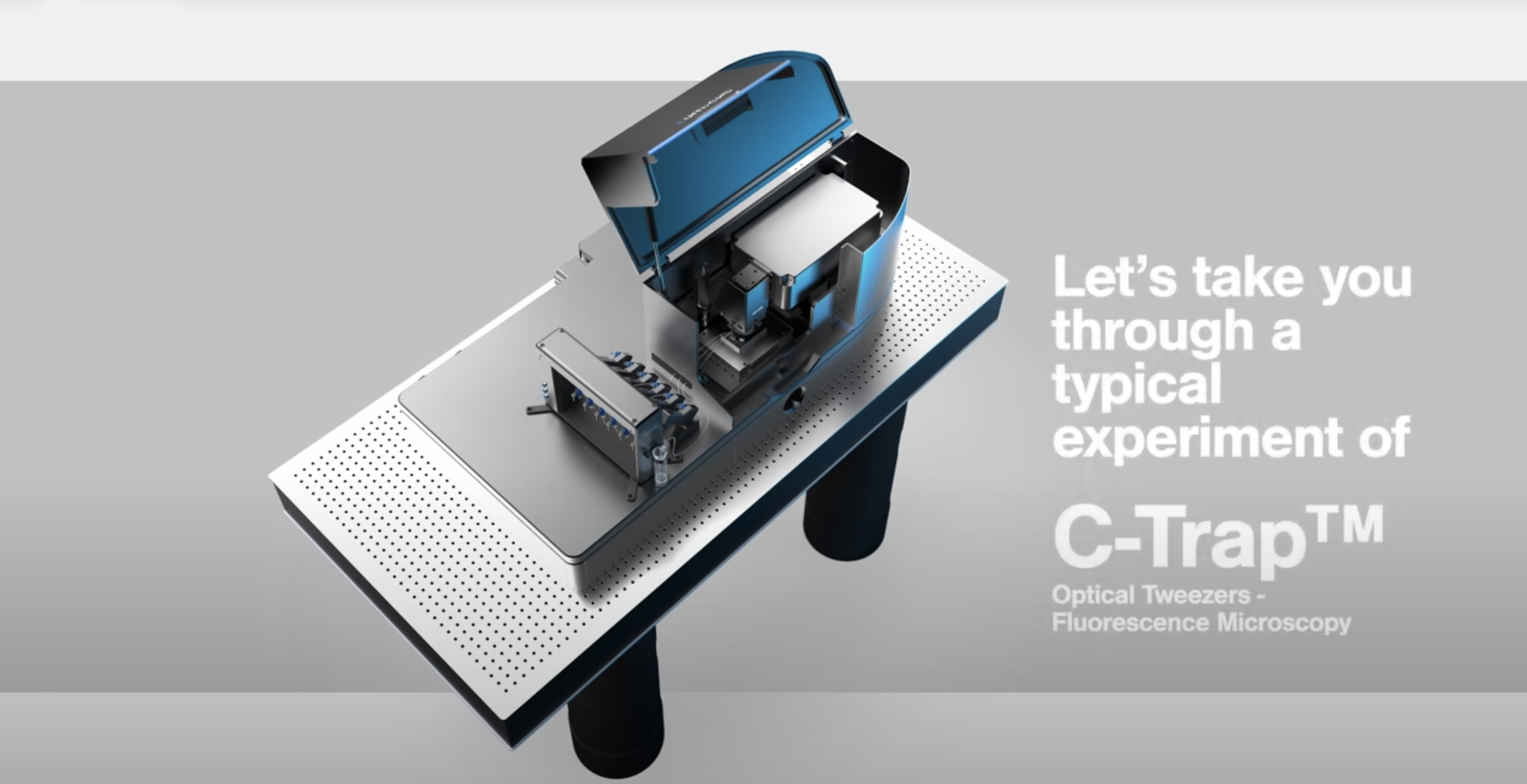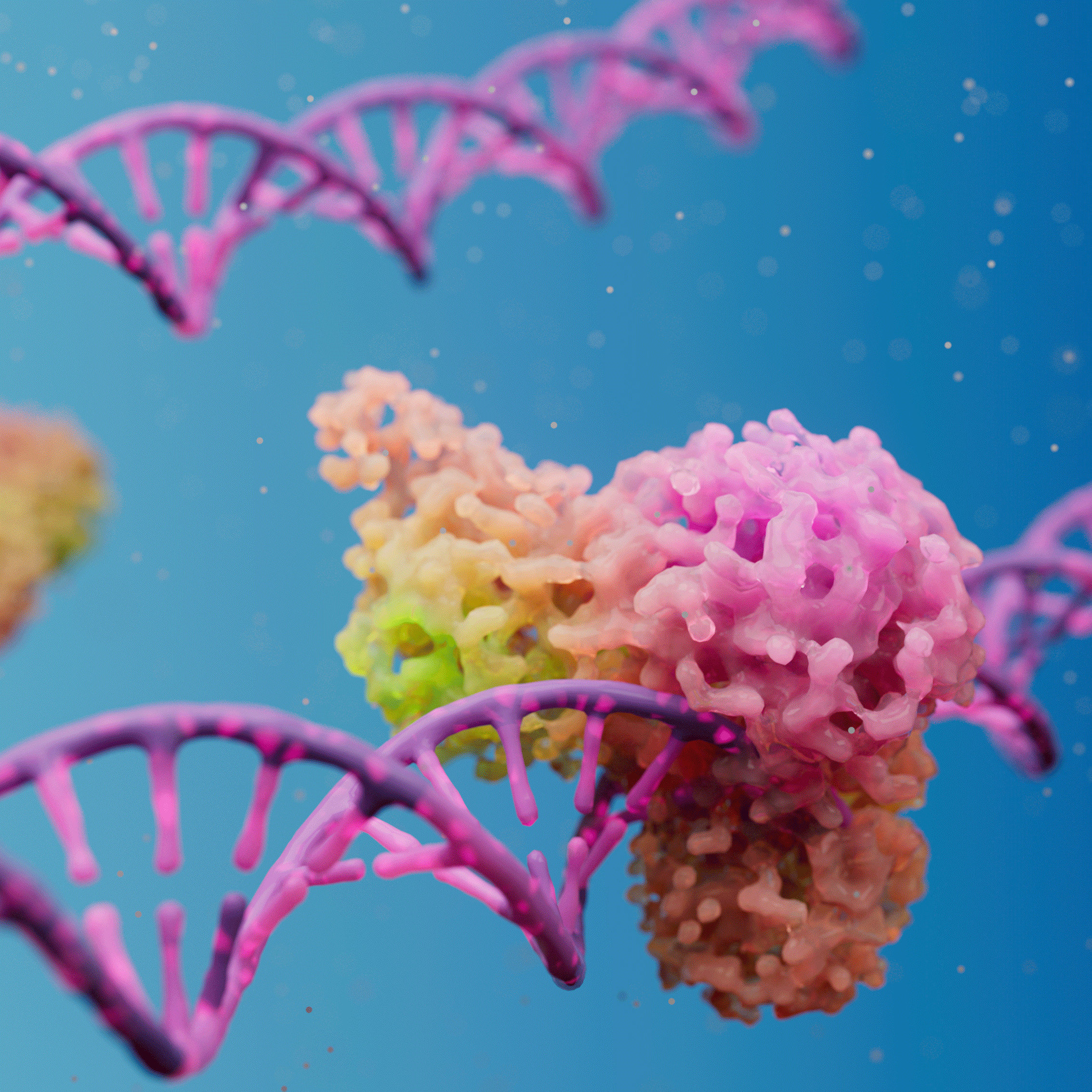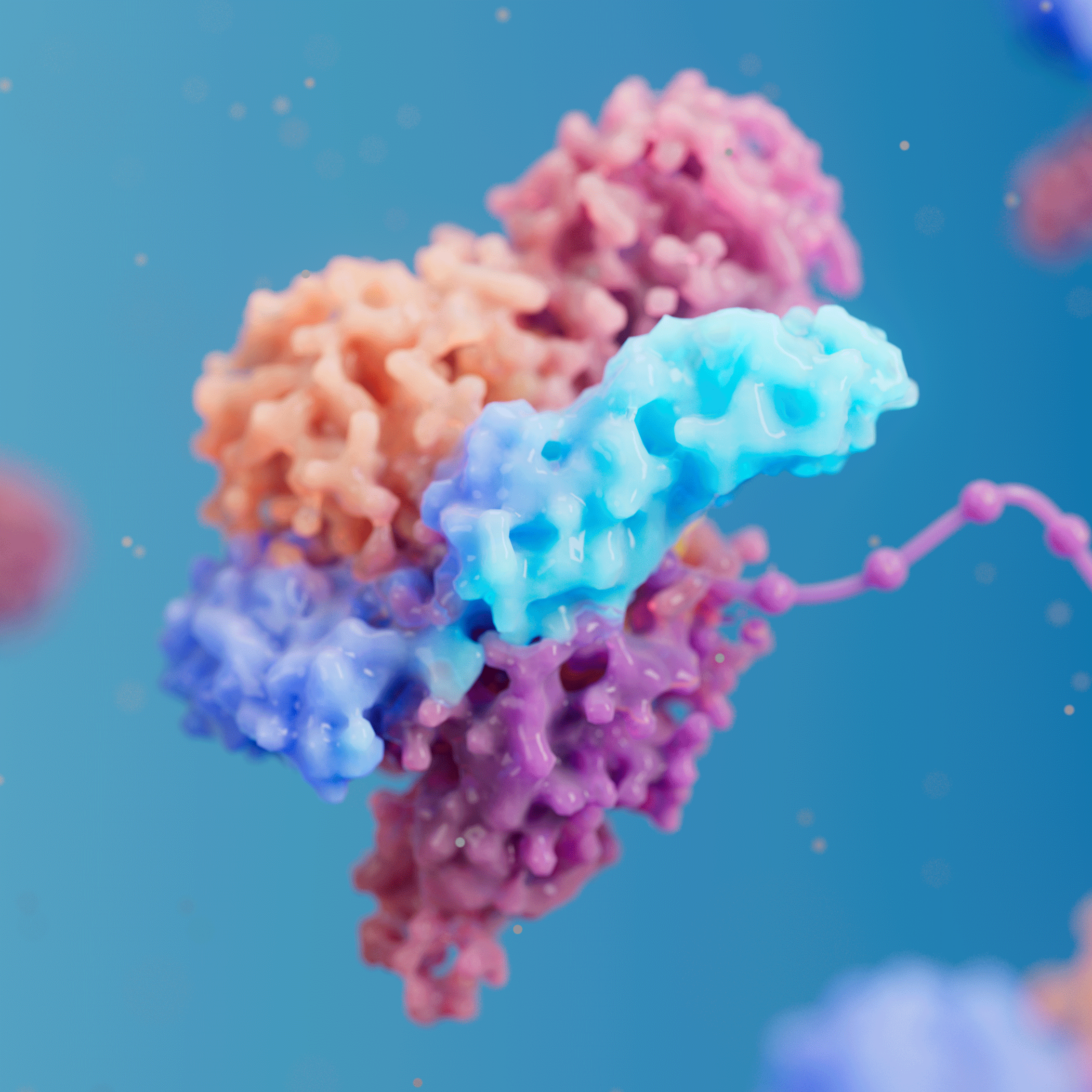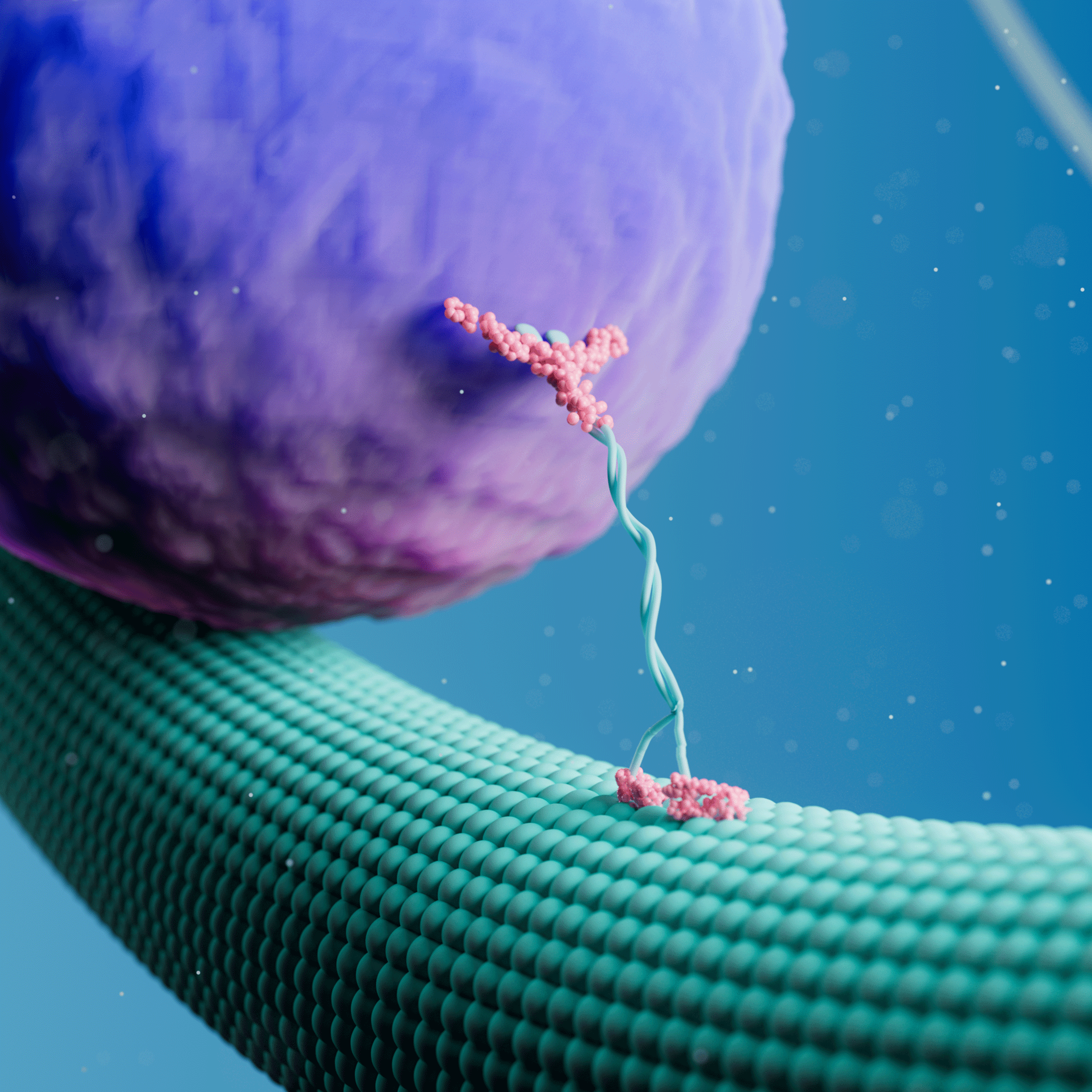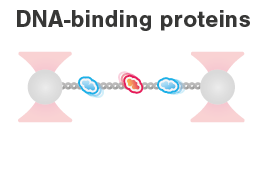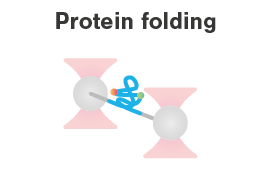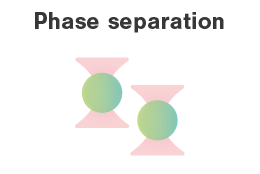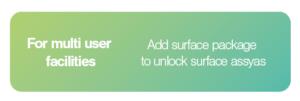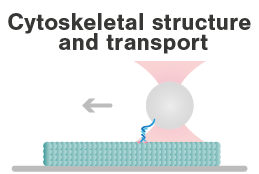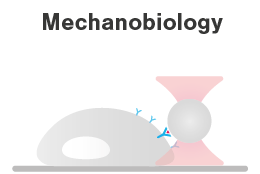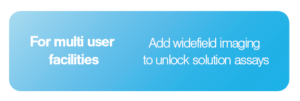Best-in-class
C-Trap® Optical Tweezers – Fluorescence & Label-free Microscopy
Jump to:
The C-Trap® provides the world’s first dynamic single-molecule microscope to allow simultaneous manipulation and visualization of single-molecule interactions in real time.
It combines high-resolution optical tweezers, fluorescence, and label-free microscopy, and an advanced microfluidics system in a truly integrated and correlated solution.
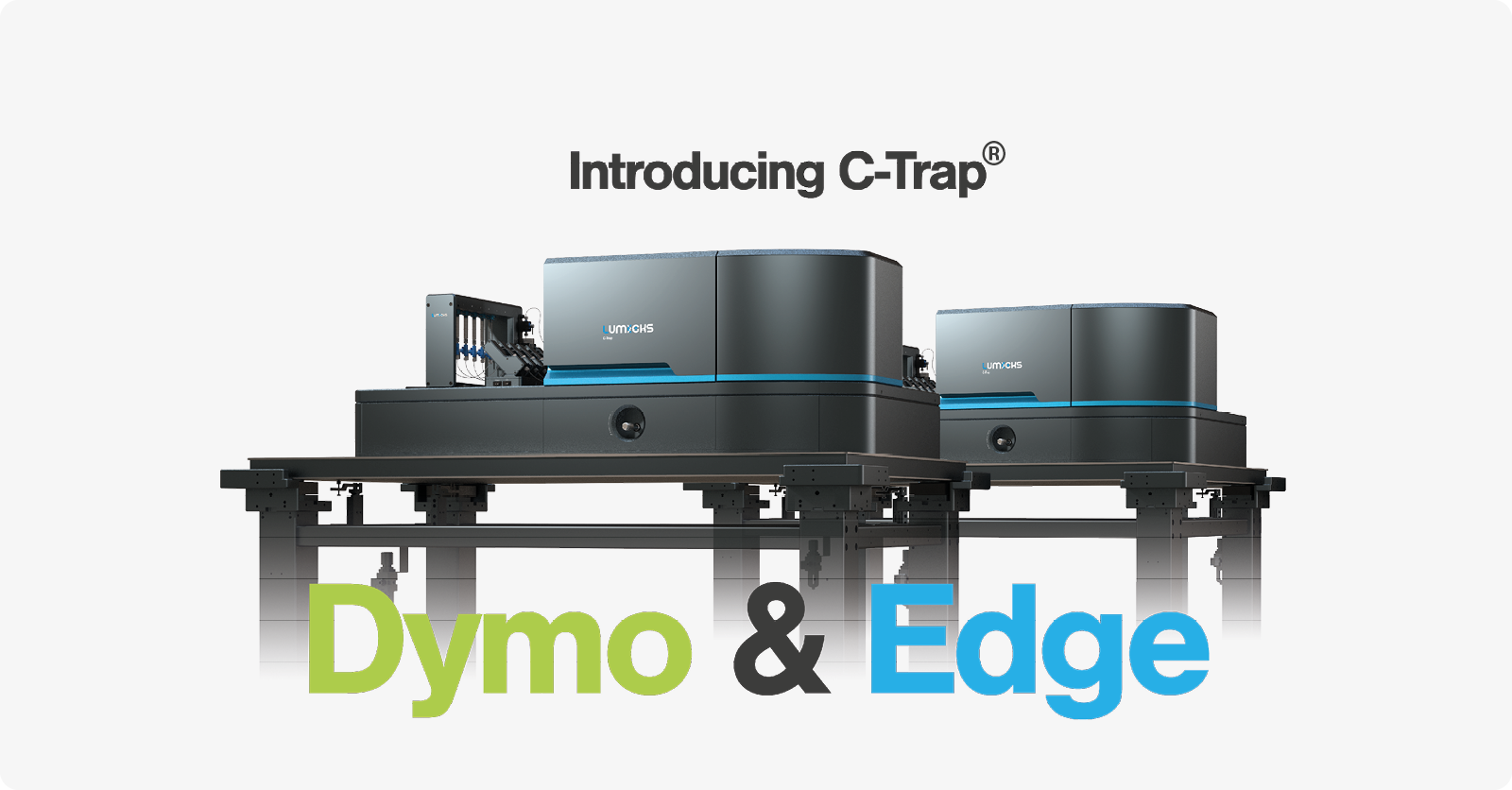
Testimonials
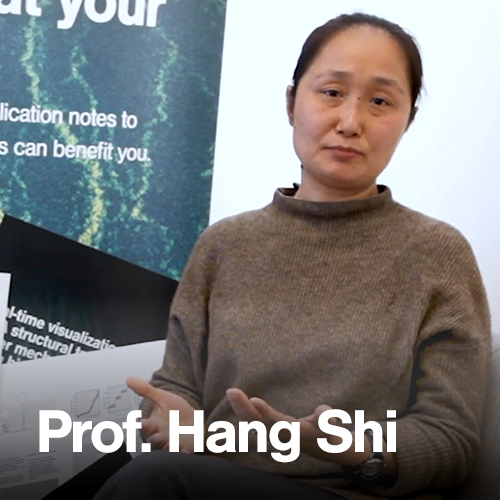
Principal Scientist at the School of Life Sciences at Tsinghua University.

Chair of the Physics Department and Group Leader of the Williams lab at Northeastern University
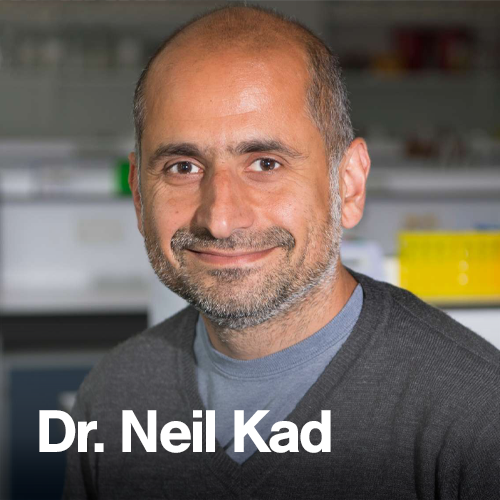
Expert in Molecular Biophysics at the University of Kent
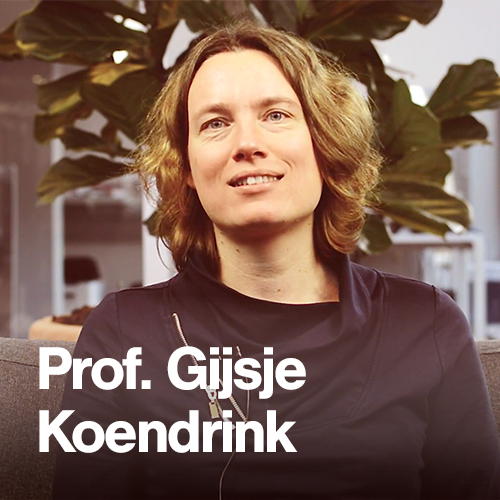
Group leader at TU Delft.
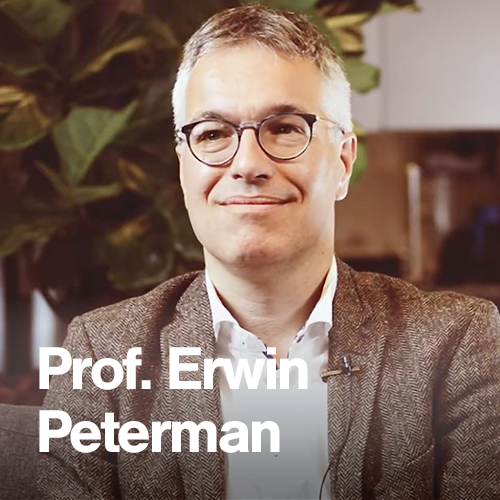
Group leader and Professor of Physics of Living Systems at Vrije Universiteit Amsterdam.
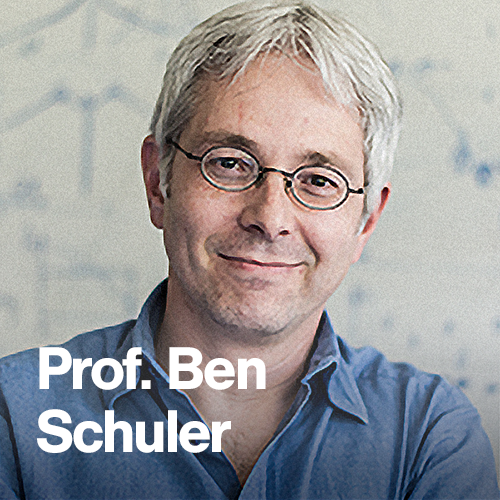
Professor of Molecular Biophysics, University of Zurich.
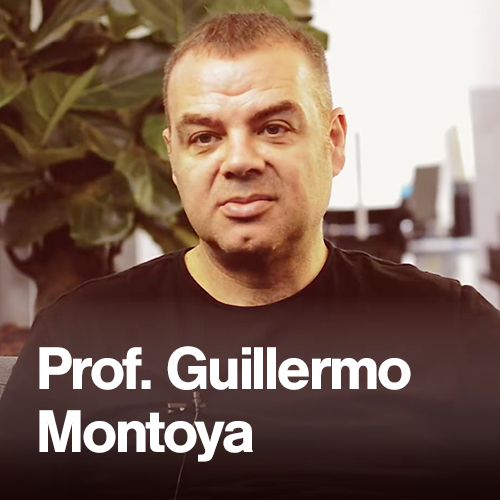
Research Director and Group Leader at the Protein Structure and Function program at Novo Nordisk Foundation Center for Protein Research (CPR) at the University of Copenhagen.
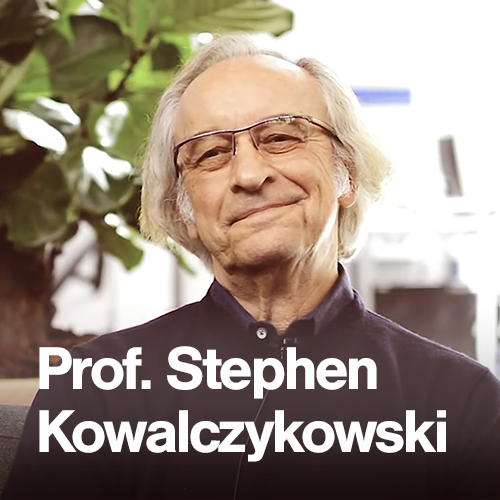
Distinguished Professor of Microbiology and Molecular Genetics at the University of California at Davis.

Group leader at Vrije Universiteit Amsterdam.
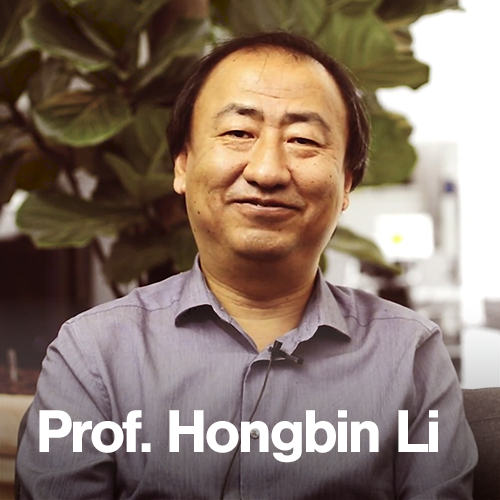
Group leader at the University of British Columbia.
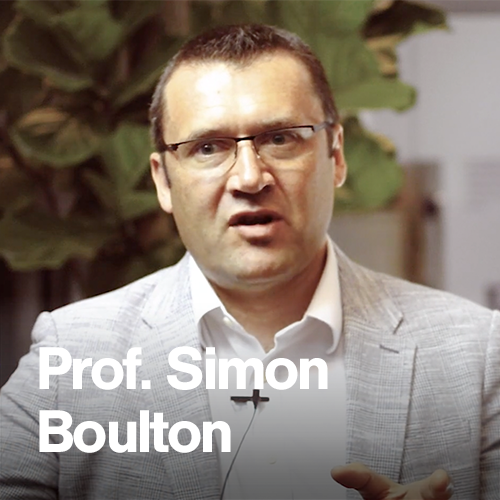
Senior vice-president at Artios Pharma Ltd and senior group leader at the Francis Crick Institute in London.
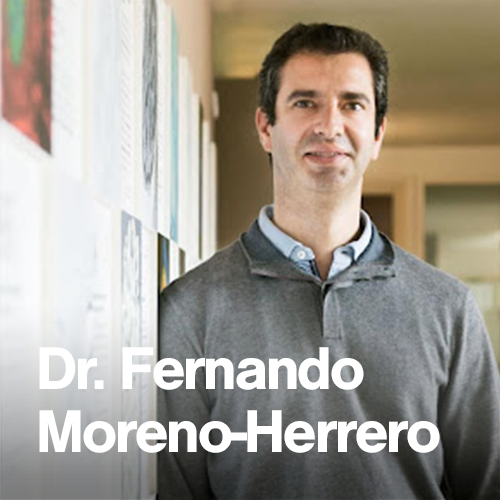
Principal Investigator at the Centro Nacional de Biotecnología

Principal investigator at the University of Groningen.
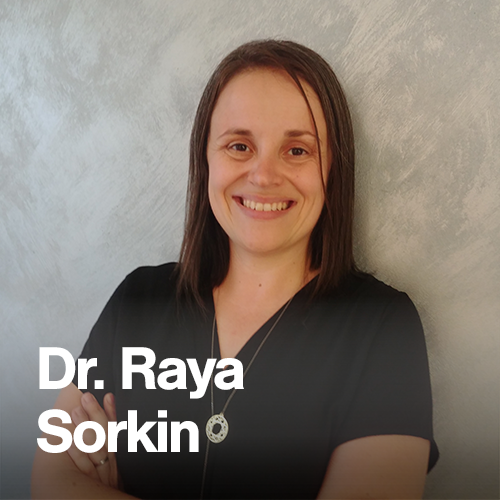
Senior Lecturer at Tel Aviv University.

Assistant Professor at Vanderbilt University.

Group Leader at the FOM Institute AMOLF.

Director and Research Group Leader at the MPI-CBG.

Graduate Fellow at the lab of Shixin Liu, Rockefeller University.
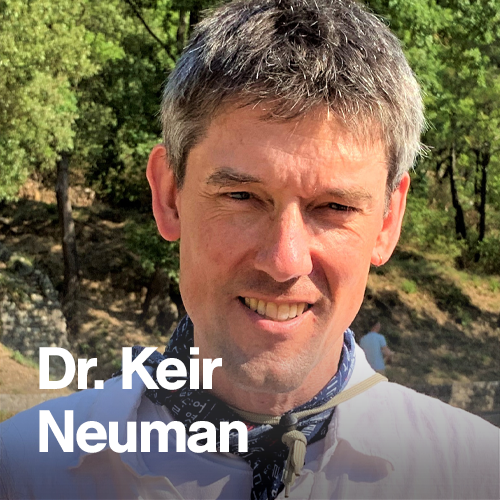
Group Leader at the NIH – National Heart, Lung, and Blood Institute.

Professor at the London Institute of Medical Sciences.
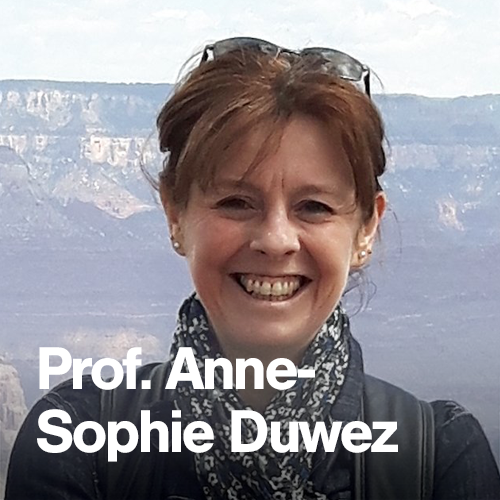
Professor and group leader at the University of Liege.

Professor at the University of Copenhagen.

Professor at the University of Cambridge, Department of Biochemistry.
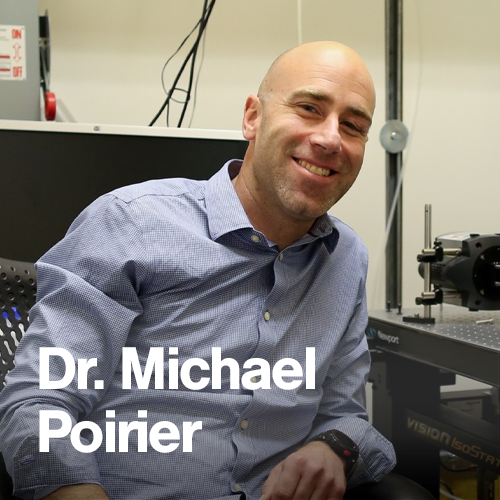
Professor of Physics at Ohio State University.
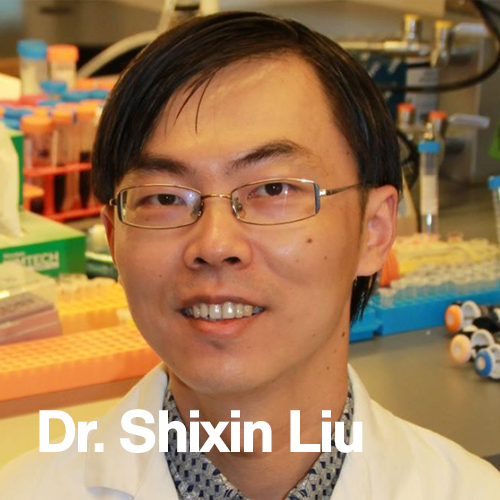
Assistant Professor at Rockefeller University and head of the Laboratory of Nanoscale Biophysics and Biochemistry.
How does it work?
In 2018 Arthur Ashkin won the Nobel Prize in Physics for his discovery that the momentum of light can be used as an incredibly sensitive set of “tweezers”.
By shooting a laser through a microscope, he created a highly focused beam of light strong enough to trap and hold in place objects such as plastic beads. These beads can be coated to stick to a variety of biomolecules, such as proteins, cytoskeleton filaments, DNA, or RNA. Furthermore, the tiniest forces applied to these molecules can be measured as well, giving the world access to a tool not only capable of manipulating biomolecules but also capable of detecting what’s happening to them.
How can it be applied to my research?
Whether you are aiming to make novel discoveries in the life sciences or develop successful drug candidates, we work on a personal level to find the right solution for you. Browse our extended list of applications to discover how these technologies can benefit your research.
Don’t see your specific field represented? Drop us an e-mail to see what we can do!
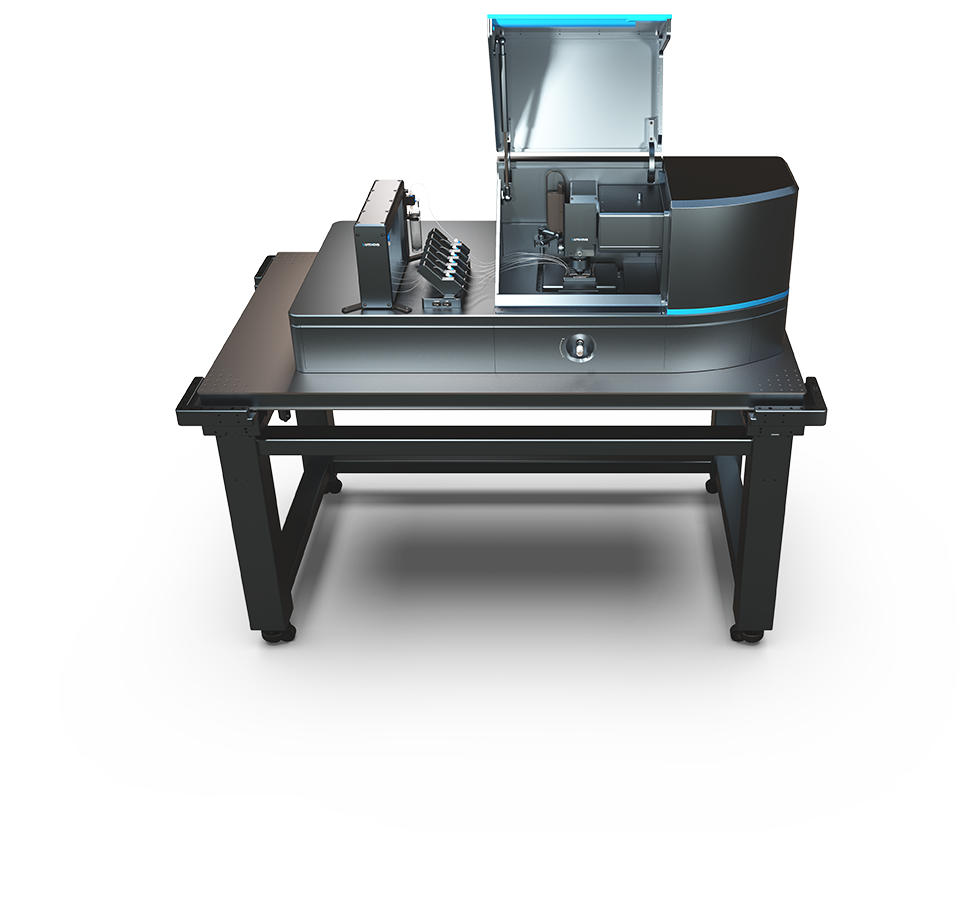
Stable and precise sample manipulation
Different optical tweezers configurations and advanced manipulation features allow you to get the most out of your sample.
Dual (2)
Optical Traps
For your typical assay in solution
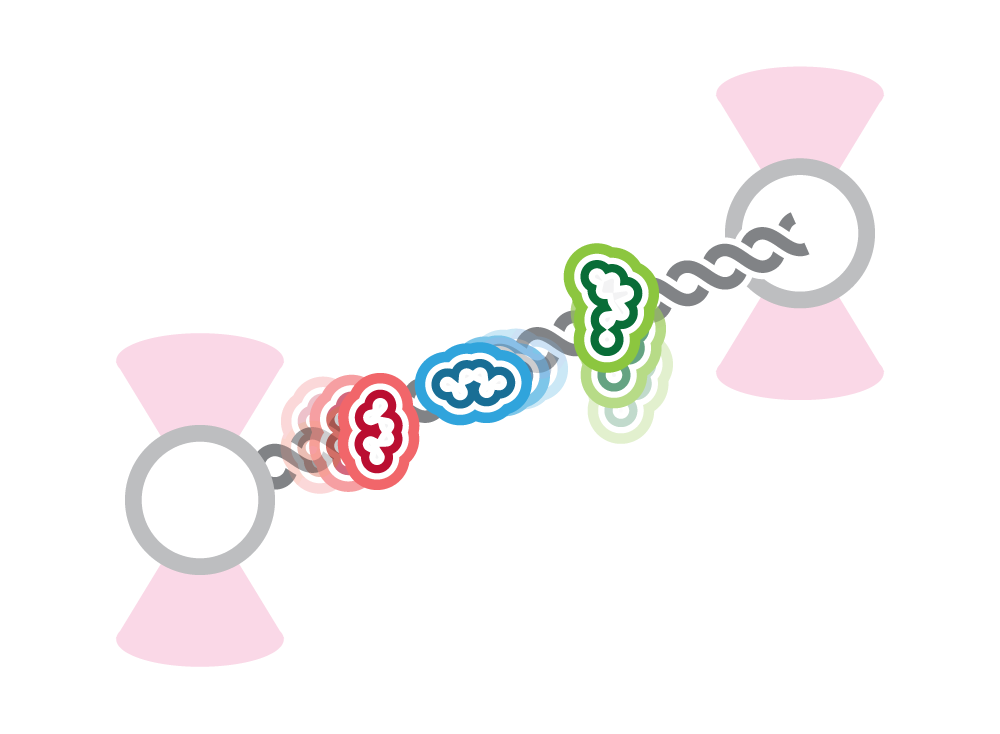
Temperature Control
Perform your experiments under relevant conditions
Quadruple (4)
Optical Traps
Excellent for complex interactions
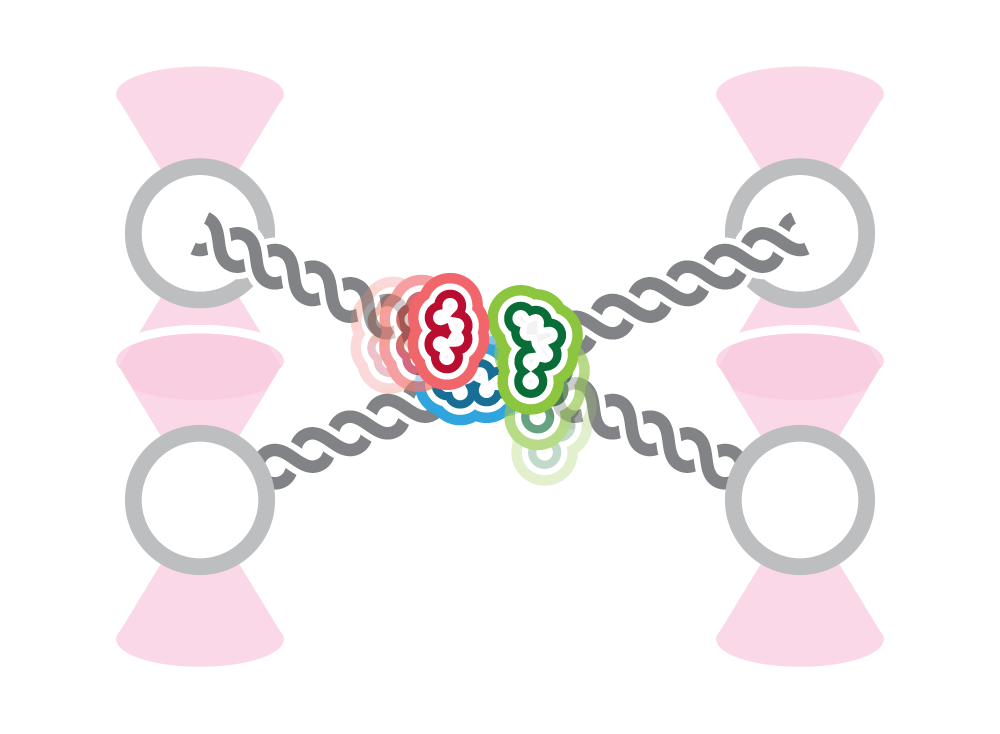
Sample
Stage
Ultra-precise measurements at the surface
Single (1)
Optical Trap
For highly stable surface assays
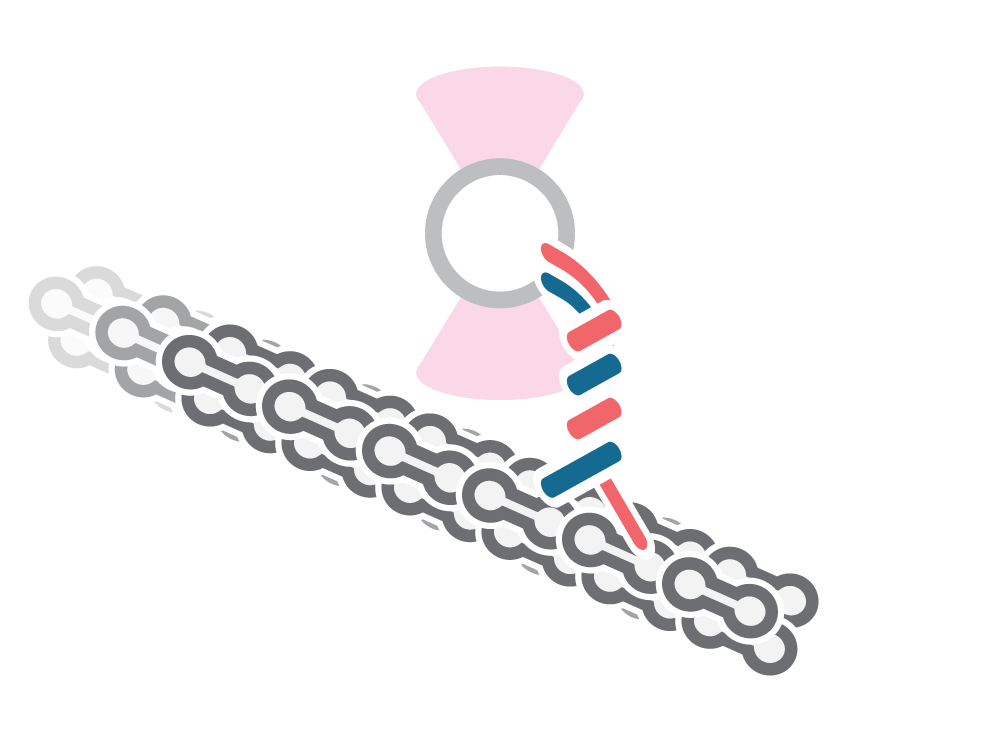
Force Detection
Force sensing detectors with optional ultra-fast sensors
A wide variety of visualization capabilities
Choose and combine from a variety of imaging methods designed specifically to solve the needs of different experimental designs.
Confocal Fluorescence
The multicolor confocal fluorescence imaging allows the visualization of biological processes such as protein kinetics and (un)binding events on DNA. It also makes it possible to measure conformational changes of proteins by combining the C-Trap with FRET. With its fast 1D scanning capabilities it is suitable for constructs such as DNA or filaments.
STED Super Resolution
Upgrade to C-Trap SR for stimulated emission depletion (STED) nanoscopy to distinguish between individual DNA-binding proteins in close proximity. Perform experiments in highly crowded environments with unprecedented resolution (< 35 nm).
IRM
Label-free Imaging
Interference Reflection Microscopy (IRM) allows you to visualize biological structures in 3D without the need for fluorescence labeling. Its high signal-to-noise ratio lets you visualize dynamic cytoskeletal interactions with the highest contrast and temporal resolution.
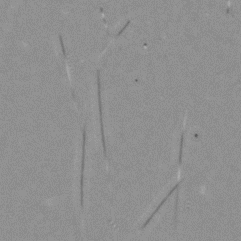
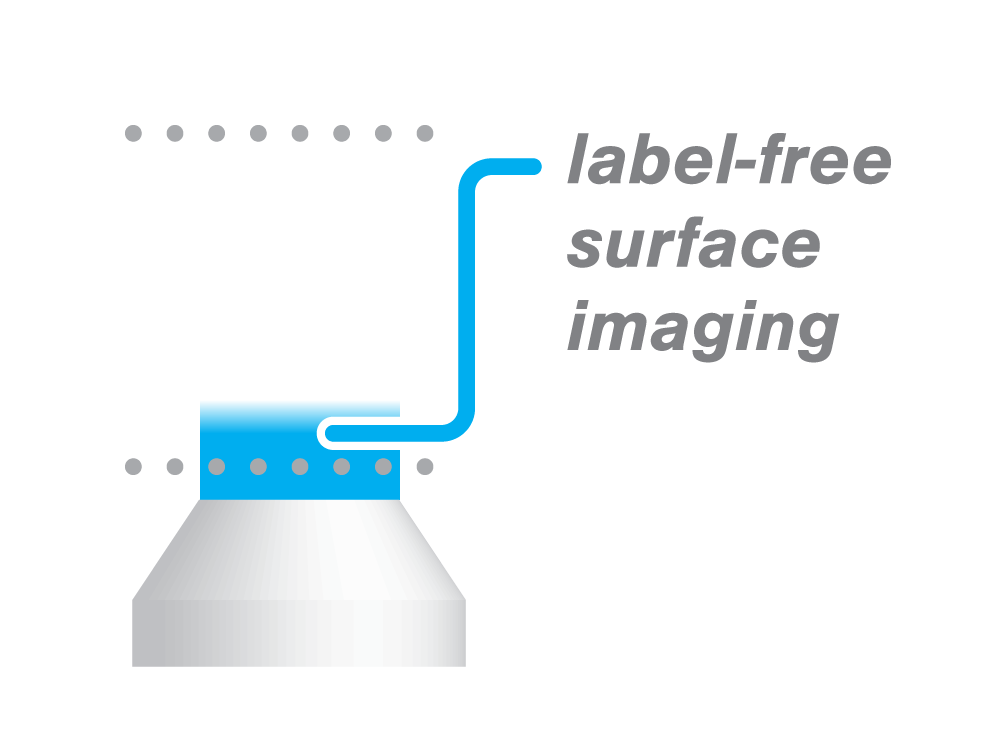
IRM can be correlated to both Widefield and TIRF!
Widefield
Fluorescent Imaging in Solution
Use Widefield microscopy to image biomolecular processes in solution with high acquisition rates. Suitable for obtaining fast movies of trapped constructs at low protein concentrations.
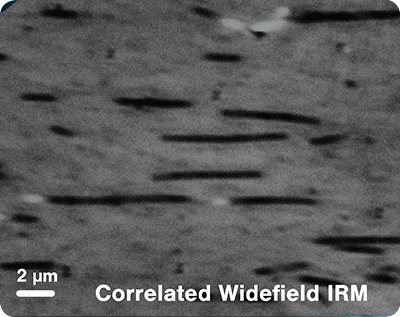
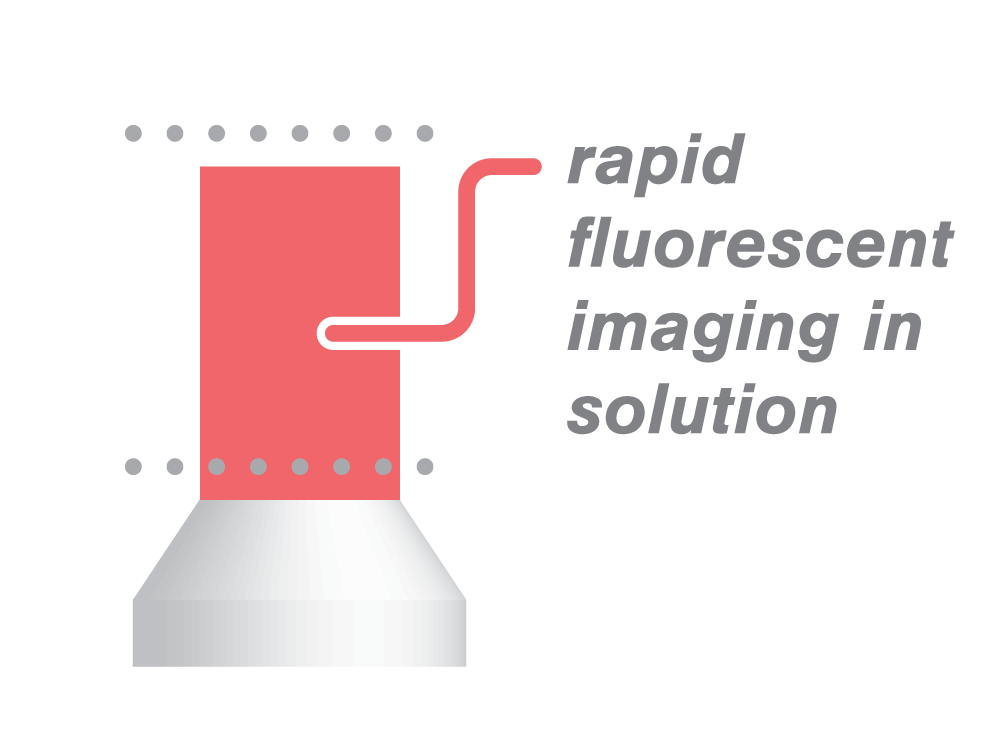
Widefield can be correlated to IRM!
TIRF
Fluorescent Surface Imaging
Total Internal Reflection Fluorescence (TIRF) is the perfect fluorescence imaging method for visualization at the surface. It allows you to image biomolecules while eliminating background fluorescence outside the focal plane.
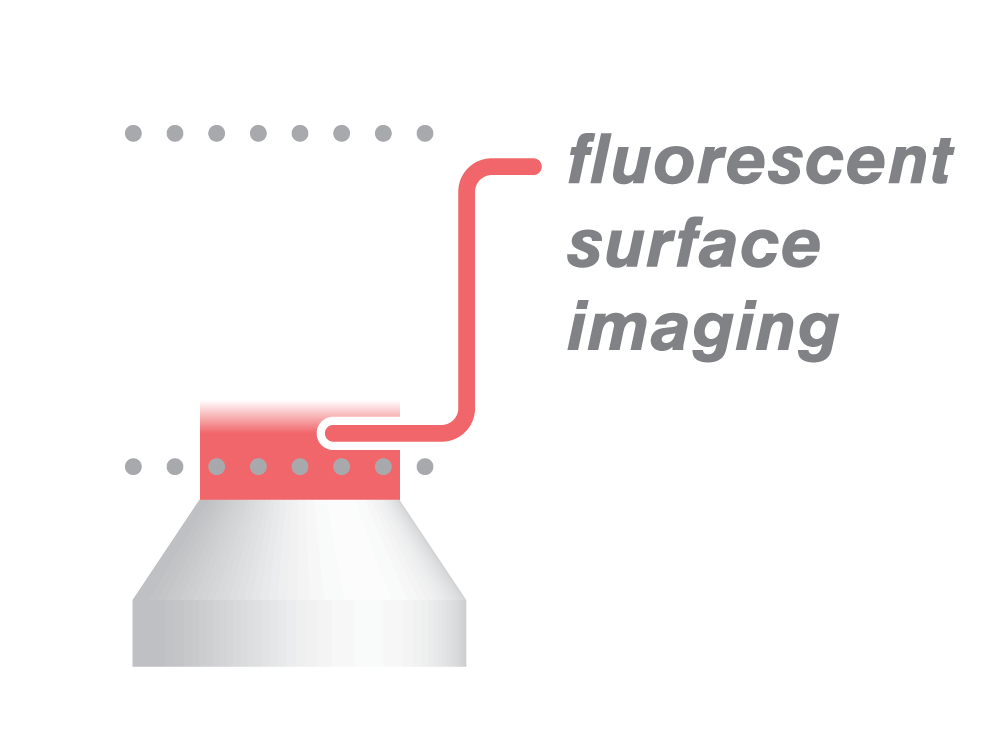
TIRF can be correlated to IRM!
Imaging Combinations
Choose confocal upgradable to STED for the highest resolution or combine label-free IRM with TIRF or Widefield to perform truly revolutionary experiments.
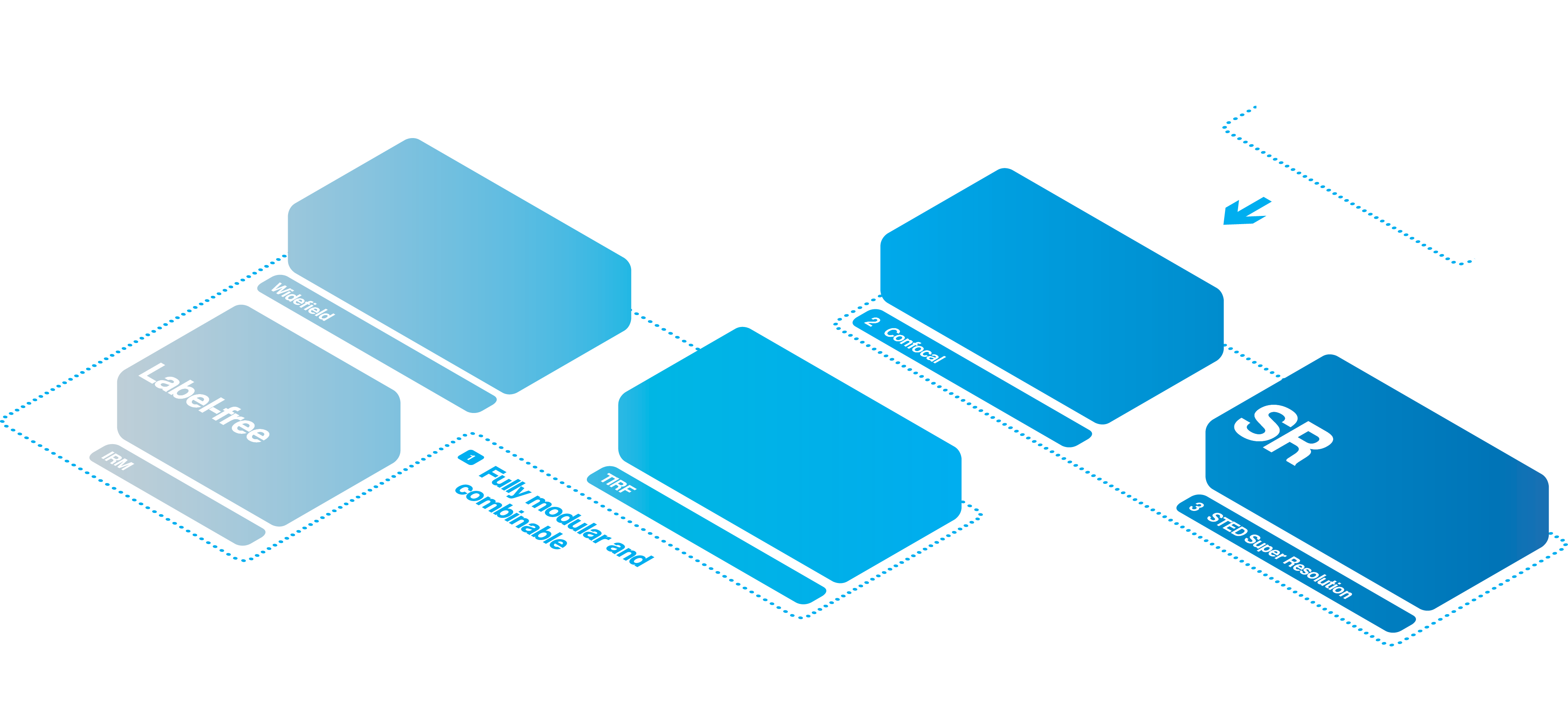
Introducing the new C-Trap products
Dymo & Edge
With the desire to constantly produce breakthrough discoveries, you need an easy-to-use instrument, fully-optimized for your applications that should bring unprecedented insights with high precision, accuracy, and reliability, in short time. Discover your solutions below!
For resolving DNA and protein dynamics and interactions
The C-Trap Dymo is purposefully built and optimized to provide the ultimate tool for solution assays. Available with confocal or widefield fluorescence and optional STED, with two or four traps, it is the perfect tool for the specialist deep-diving into one specific application or the facility providing access to users working on a variety of different solution assays. Ideal for:
For unprecedented cellular and cytoskeletal insights
The C-Trap Edge is a next generation tool developed specifically for ultra-stable surface assays at the single-molecule level. Designed from the bottom-up, this solution enables scientists to investigate the cytoskeleton from a new dynamic perspective. With imaging on the surface (smTIRF, IRM) and workflow tools that enable surface assays, it brings the best of surface imaging and optical tweezers tweezers into a fully integrative platform. Ideal for:
Find out which C-Trap product and configuration suits your research needs best!
High throughput experiment workflow
Loading your sample and analysing your data in less than 30 minutes.
Fast and easy workflow of C-Trap experiments
The C-Trap system offers a fast workflow while its intuitive control, automation, and data analysis features ensure the highest ease of use for all users.
Watch the video below to see the workflow for a typical C-Trap experiment, show-cased on the example of Cas9-DNA binding. In just a few steps, you can go from setting up your assay to analyzing your data!
For more details on the individual steps, explore the tabs above.
Step 1
Load your sample into the flow
With fast and simple pipetting
For solution assays, load your samples and conditions into the syringes of the 5-channel u-Flux™ Laminar Flow Microfluidics system. Pipetting each reagent takes seconds thanks to the twist-and-lock syringe adaptor, with which you can quickly and easily refill individual syringes.
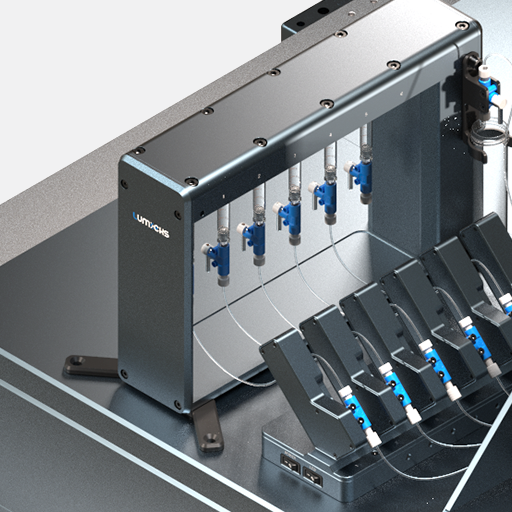
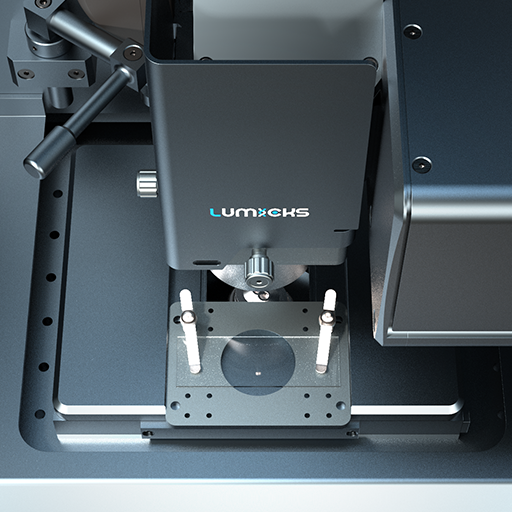
Step 2
Assemble your assay without physical barriers
With our new nano stage option and using laminar flow microfluidics
For solution assays, you can seamlessly move your optical traps to gather reagents, move them between the 5 microfluidics lanes, and assemble your constructs.
For surface assays, double-click on a bead to trap it. You can easily locate your samples using, for example, IRM or fluorescence microscopy. The high-resolution piezo-controlled nanostage, allows you to accurately move between positions (x and y) to place the trapped bead at the end of the microtubule and start your experiment.
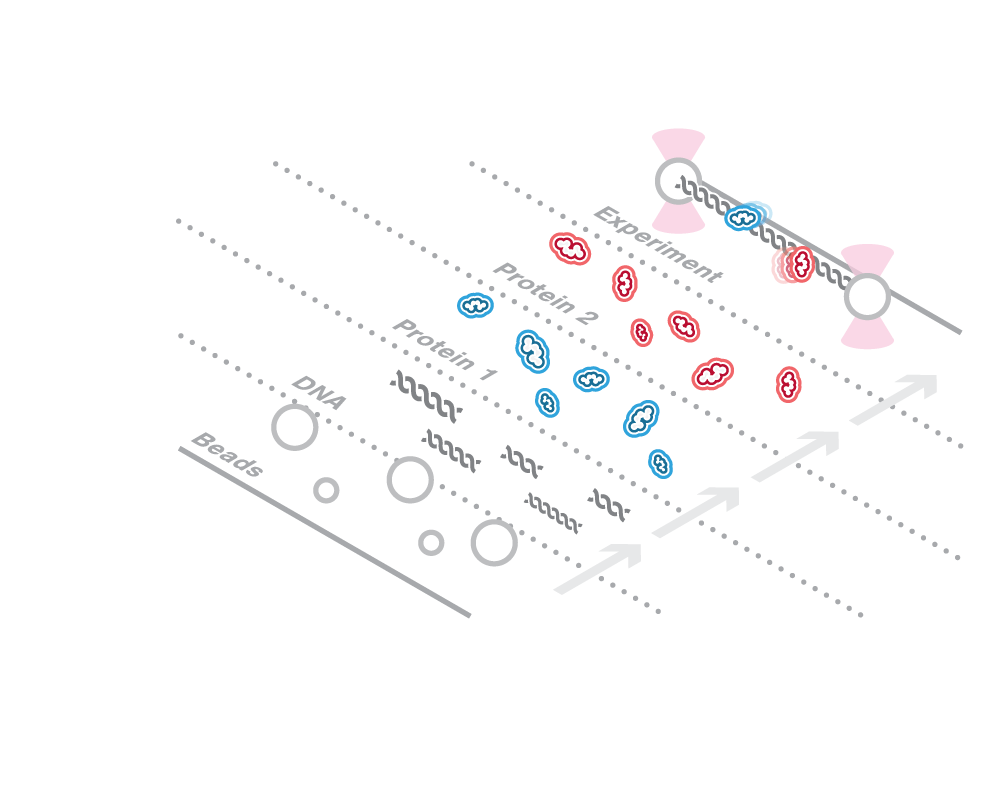
In solution
Multiple adjacent laminar flow channels that do not mix (no physical barriers are involved). Use the traps to move between flows to pick up anything you like.
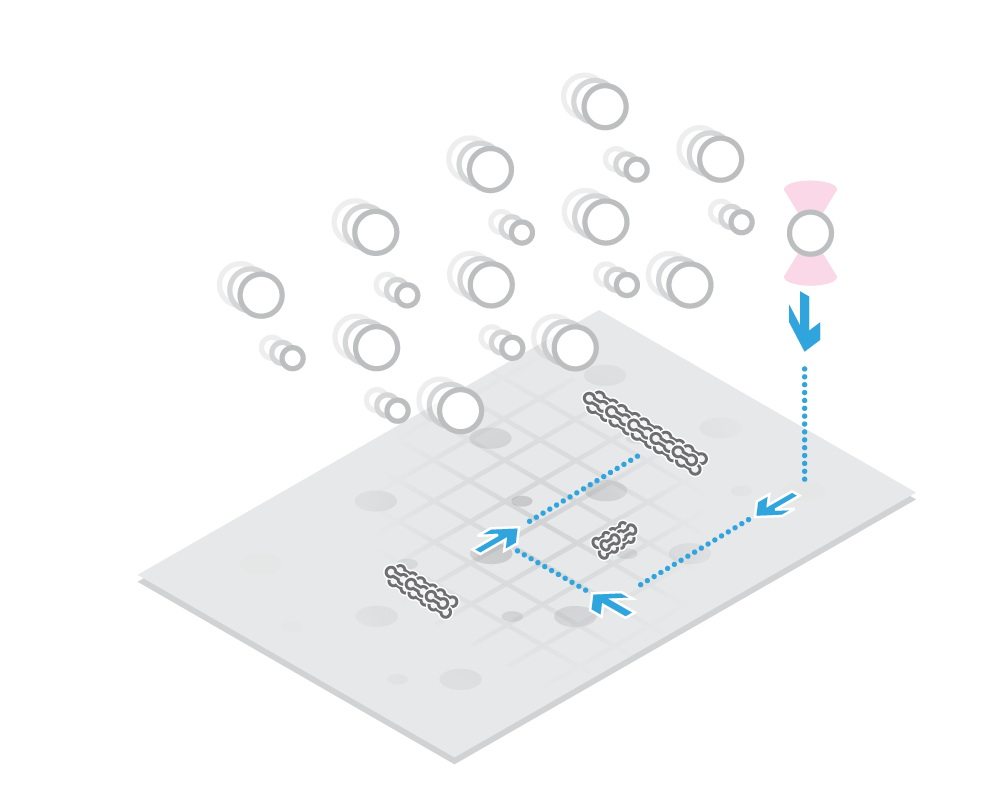
At the surface
Beads float in solution, while microtubules are at the surface. Bring them together using click-to-move optical traps and the new sample stage option.
Step 3
Perform and automate your experiments
With our Bluelake software suite
Bluelake™ is an intuitive user-friendly software suite containing programs that simplify, automate, and enhance single-molecule experiments and real-time data gathering with a mouse click. For example, use Bluelake to:
- Assemble your samples and run your experiment in 80 seconds.
- Extract 18 sets of data in only 30 minutes.
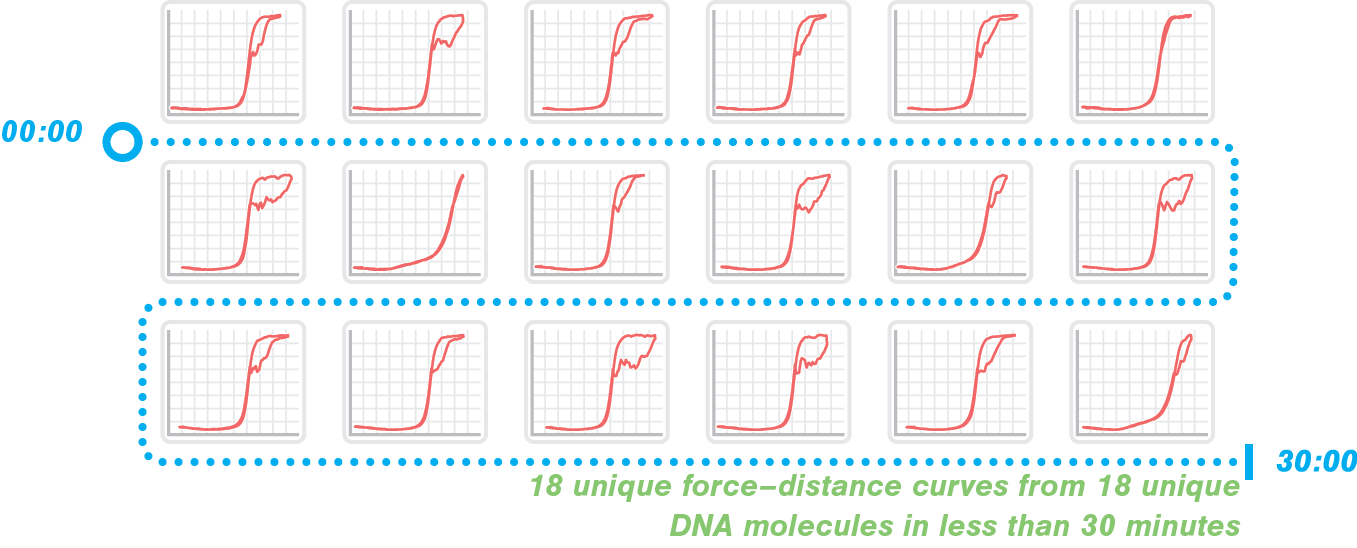
Done!
Organize and analyze your data
With a dedicated software suite
Generate a structured experiment overview with fast and smooth navigation through multiple days of measurements. View, compare and export your fully correlated data stream during or after the experiment. The dedicated software automatically stores all your metadata so you never lose valuable information and always have the option to reproduce your experiments.
Analyzing and repeating experiments has never been easier, as our analysis software comes with tutorials and sample notebooks that can serve as a scaffold for your own analyses.
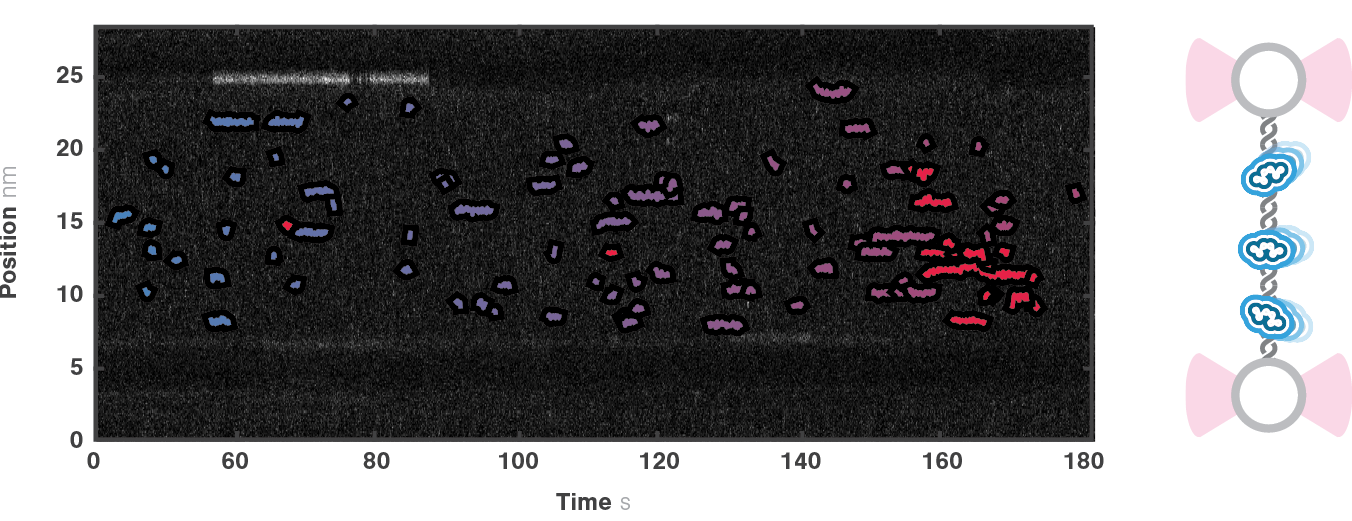
Kymotracker is a data analysis package that automatically tracks individual fluorescent traces on a recorded kymograph, allowing you to easily quantify protein-binding events and evaluate them over time.
Easy and intuitive software package
Check how you can completely automate your experiments using our user-centered software workflow.
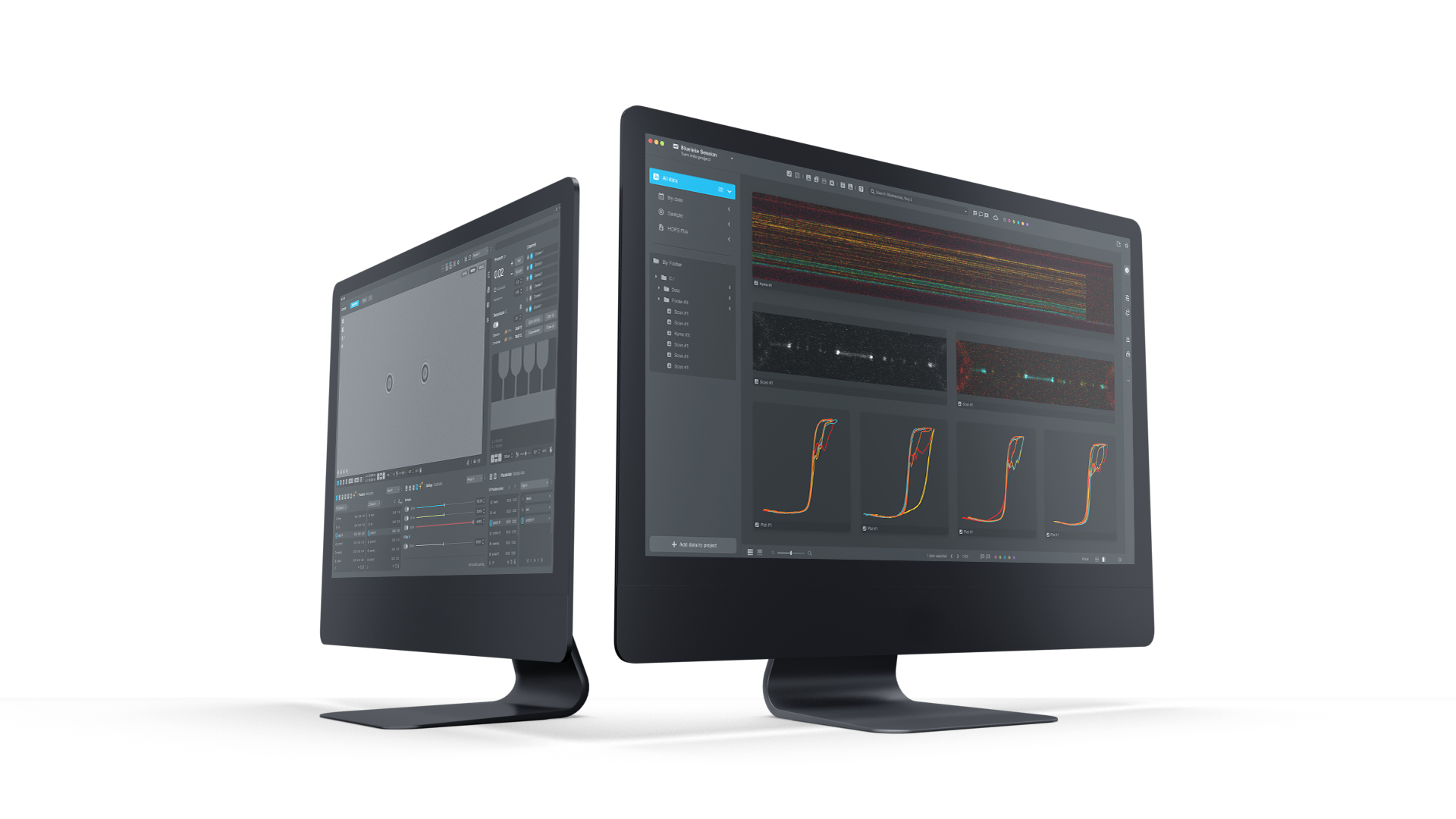
Intuitive controls
Quick and easy sample interfacing
The software gives you total control over your experiments. Whether you are visually navigating through the laminar flow cell on the screen or selecting the area you wish to scan through the bright-field camera, our approach puts you in the front seat.
Fully correlated data
Everything in a single timeline
Bluelake was designed to control all aspects of your system from a single interface. The trap positions, force data, bright-field, fluorescence microscopy, and label-free images use the same software package, which truly correlates the experiments.
Ready-made reagents, kits, and tailored sample preparation services
Use our newly-established biochemistry platform and internal expertise for the purification, labeling, and preparation of your reagents for optical trapping experiments. With our multidisciplinary expertise in molecular biology, biochemistry, and dynamic single-molecule analysis, we’ve created the most extensive selection of ready-made reagents, kits, and tailored services to prepare your samples.
